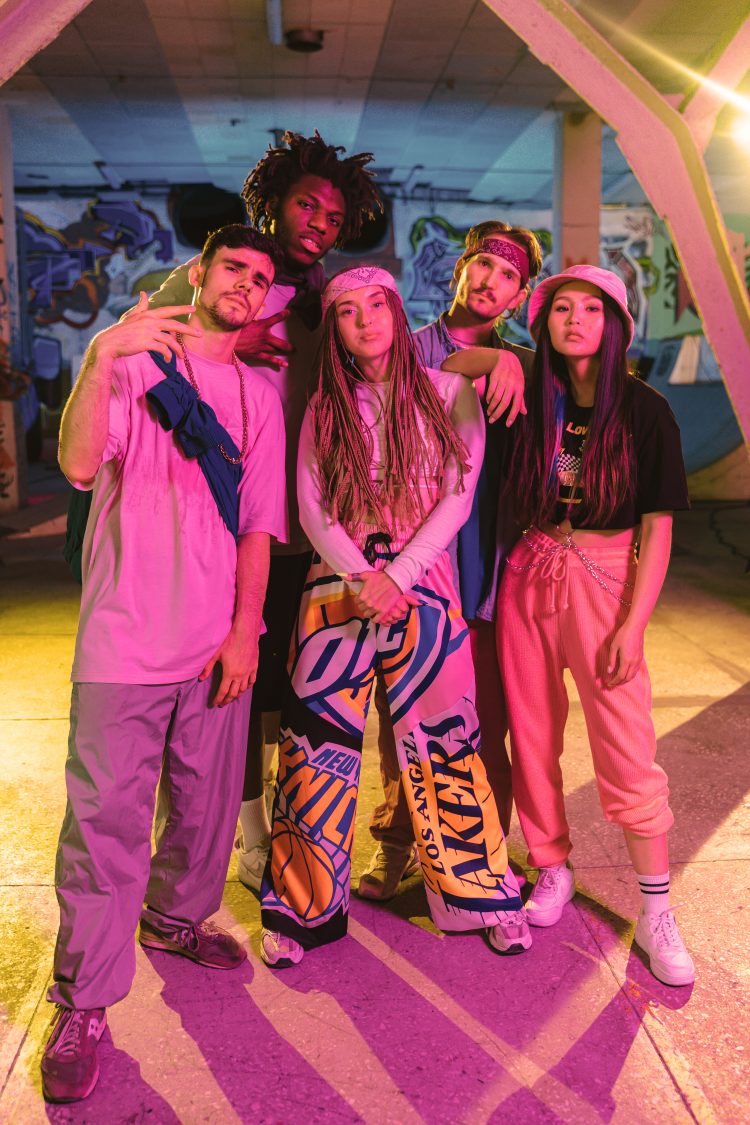Fashion Inspired
The Rise of Streetwear and its Influence on Fashion

Streetwear has come a long way since its humble origins as a subculture connected with skate and surf culture. Over the last several decades, streetwear has developed into a worldwide phenomenon, affecting not just how we dress, but also altering the fashion industry as a whole. Streetwear’s growth has been nothing short of spectacular, from its origins in hip-hop culture to its present role as a cornerstone in mainstream fashion. This article will look at the history and growth of streetwear, as well as how it has affected mainstream fashion trends.
The origins of streetwear
The roots of streetwear in skate and surf culture
Streetwear’s beginnings may be traced back to the 1970s and 1980s, when skate and surf culture became prominent in the United States. Vans, Stüssy, and Supreme were among the first to embrace the skate and surf culture and design apparel to match it. These brands, which began as modest, independent businesses, gradually earned cult status among skate and surf fans.
The emergence of hip hop and its influence on streetwear

As streetwear gained popularity in skate and surf culture, it began to penetrate hip hop culture. Hip hop culture was on the rise in the 1980s and 1990s, as was the impact of streetwear. Rappers such as Run-D.M.C., A Tribe Called Quest, and Wu-Tang Clan all adopted streetwear as a form of self-expression and a method to stand out from conventional fashion.
The link of streetwear with hip hop and skate culture gave it a rebellious, countercultural edge that distinguished it from conventional fashion. Rather of following traditional fashion trends, it allowed people to show their individuality and embrace their own style. To this day, the sense of originality and authenticity remains at the core of streetwear culture.
The evolution of streetwear
Streetwear has evolved from a subculture linked with skate and surf culture to a mainstream fashion movement in the last several decades. The rise of high-end streetwear labels has been a crucial element in this progression, helping to elevate streetwear to new levels of refinement and status.
The emergence of high-end streetwear brands and their impact on fashion
Brands like Supreme, Off-White, and A Bathing Ape (BAPE) have gained a loyal following among fashion-conscious consumers, and their products often sell out within hours of being released. These brands have also attracted the attention of luxury fashion houses, which have collaborated with streetwear brands or incorporated streetwear elements into their own collections.
In addition to the growth of high-end streetwear labels, social media has played an important role in promoting streetwear brands and trends. Instagram, in particular, has aided in the dissemination of new releases and collaborations, as well as offering a forum for streetwear lovers to exhibit their personal style.
The role of social media in promoting streetwear brands and trends
As streetwear continues to evolve, it will be interesting to see how it continues to shape and be shaped by the fashion industry. Whether it remains a subculture or fully integrates into mainstream fashion, it’s clear that streetwear will always be a force to be reckoned with.
Streetwear’s influence on mainstream fashion
Streetwear has had a significant impact on mainstream fashion in recent years, with several high fashion labels adding elements of streetwear into their designs. Streetwear components may be featured on major fashion companies’ runways, ranging from graphic t-shirts and sneakers to oversized jackets and jogging trousers.
The rise of high-end streetwear companies like Supreme and Off-White, which have garnered a dedicated following among fashion-conscious customers, has contributed to the blurring of distinctions between high fashion and streetwear. Luxury fashion firms have also attempted to enter the streetwear industry through collaborations with streetwear labels or the incorporation of streetwear features into their own collections.
The incorporation of streetwear elements into high fashion collections
The inclusion of streetwear aspects into high fashion has helped to make fashion more accessible and relatable to a larger audience. It has also aided in the breakdown of conventional fashion industry hierarchies, as streetwear and high fashion labels increasingly draw from and influence one another.
The blurring of lines between high fashion and streetwear
As streetwear continues to evolve and shape mainstream fashion, it will be interesting to see how these trends continue to develop. Whether it’s the incorporation of streetwear elements into high fashion collections or the blurring of lines between the two, it’s clear that streetwear is having a major impact on the way we dress.
The importance of authenticity and individuality in streetwear culture
Streetwear has always been about more than just clothing – it’s a culture that values authenticity, individuality, and self-expression. From its roots in skate and surf culture to its current status as a mainstream fashion movement, streetwear has always been about standing out and making a statement.
One of the defining features of streetwear culture is its emphasis on authenticity. Streetwear enthusiasts value brands and styles that are genuine and true to their roots, rather than those that are simply trying to capitalize on trends. This focus on authenticity has helped to create a sense of community and shared values within the streetwear scene.
In addition to authenticity, streetwear culture also values individuality. Streetwear enthusiasts are known for their unique personal style and their willingness to mix and match different brands and styles to create something truly original. This emphasis on individuality has helped to create a diverse and vibrant culture that celebrates self-expression.
In an increasingly homogenized world, the importance of authenticity and individuality in streetwear culture cannot be overstated. Whether you’re a fan of streetwear or just appreciate its values, it’s clear that this culture has a lot to offer.
